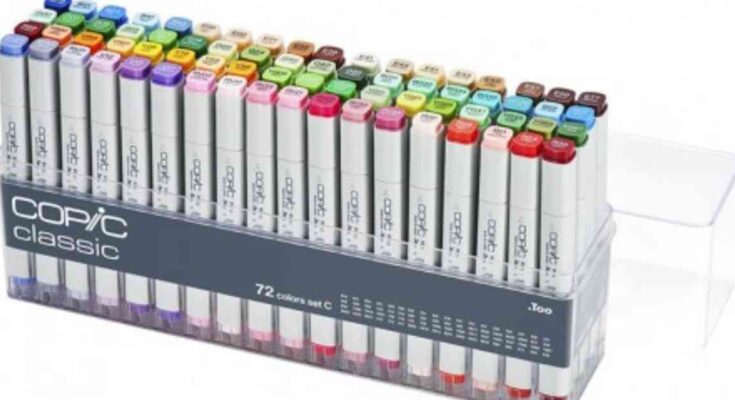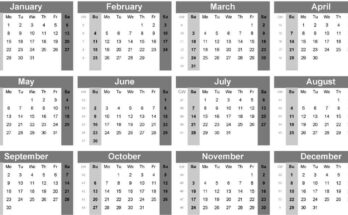Markers, also known as “markerji” in some regions, are ubiquitous tools that find application in a myriad of activities ranging from artistic creation to practical use in education, industry, and daily life. These versatile writing instruments have evolved significantly since their inception, with various types catering to diverse needs. This article delves into the history, types, uses, and innovations of markers, highlighting their indispensable role in fostering creativity and functionality.
The Evolution of Markers
The concept of markers dates back to ancient civilizations, where rudimentary forms of writing instruments were used for artistic and communicative purposes. However, the modern marker pen as we know it was developed in the mid-20th century. The first patent for a felt-tip marker was filed in 1910 by Lee Newman, and it wasn’t until the 1950s that markers became commercially available. Sidney Rosenthal is credited with popularizing the marker pen in 1953, with his invention known as the Magic Marker.
Types of Markers
Markers come in various types, each designed for specific purposes. The primary categories include:
- Permanent Markers: Known for their indelible ink, permanent markers are used to write on a variety of surfaces, including paper, metal, glass, and plastic. The ink is usually waterproof and resistant to fading, making these markers ideal for labeling and long-lasting applications.
- Dry Erase Markers: Commonly used on whiteboards, dry erase markers have ink that can be easily wiped off with a cloth or eraser. They are essential tools in educational and office settings for presentations and teaching.
- Wet Erase Markers: Unlike dry erase markers, wet erase markers require a damp cloth for removal. They are often used on non-porous surfaces like laminated sheets and overhead projector transparencies.
- Highlighters: Designed to emphasize text, highlighters use translucent ink to make words and sentences stand out without obscuring the underlying content. They are widely used in academic and professional settings for note-taking and editing.
- Art Markers: These markers are specifically created for artistic purposes, offering a range of vibrant colors and various tip shapes. They include alcohol-based markers, water-based markers, and brush markers, catering to different artistic techniques and preferences.
- Paint Markers: Featuring opaque, permanent paint, these markers are used for art projects, DIY crafts, and industrial applications. They can write on almost any surface, including metal, glass, wood, and plastic.
- Fabric Markers: These markers are designed to be used on fabric, allowing for permanent designs on clothing and other textile materials. The ink is usually washable and resistant to fading.
Uses of Markers
Markers are incredibly versatile, serving numerous purposes across different fields. Here are some of the most common uses:
Artistic Expression
Artists and designers often rely on markers for their versatility, ease of use, and vibrant colors. Art markers, in particular, are prized for their ability to blend seamlessly and create detailed illustrations. They are used in various art forms, including drawing, painting, and calligraphy. Markers also play a significant role in graphic design, where precision and bold lines are essential.
Education
In educational settings, markers are indispensable tools. Teachers use dry erase markers for writing on whiteboards during lessons, facilitating interactive learning. Highlighters help students emphasize key points in their textbooks and notes, enhancing study efficiency. Markers are also used in arts and crafts activities, encouraging creativity among students.
Office and Professional Use
Markers are essential in offices for presentations, brainstorming sessions, and organizational tasks. Dry erase markers are used on whiteboards during meetings, while permanent markers are used for labeling files, folders, and other office supplies. Highlighters are invaluable for reviewing documents and highlighting important information.
Industrial Applications
In industrial settings, markers are used for labeling and marking materials. Permanent markers are employed to write on various surfaces, ensuring durability and legibility. Paint markers are often used in construction and manufacturing for marking metal, wood, and other materials.
Home and Personal Use
Markers are also common in households for a variety of tasks. Parents and children use markers for arts and crafts projects, creating fun and engaging activities. Permanent markers are handy for labeling storage containers, organizing household items, and creating custom decorations.
Innovations in Marker Technology
Marker technology has advanced significantly over the years, with innovations aimed at improving performance, safety, and environmental impact. Some notable developments include:
Non-Toxic Ink
Early markers often contained harmful chemicals, but modern markers are designed with non-toxic ink to ensure safety, especially for children. This development has made markers safer for use in schools and homes.
Eco-Friendly Markers
With growing environmental awareness, manufacturers have developed eco-friendly markers made from recycled materials and biodegradable components. Some markers use water-based ink, which is less harmful to the environment compared to solvent-based ink.
Refillable Markers
To reduce waste, many brands offer refillable markers. These markers can be refilled with ink once they run dry, extending their lifespan and minimizing environmental impact.
Advanced Tip Designs
Marker tips have evolved to cater to specific needs. Fine-tipped markers provide precision for detailed work, while broad-tipped markers cover larger areas. Brush markers, which mimic the feel of a paintbrush, are popular among artists for their versatility and control.
Improved Ink Formulations
Modern markers boast improved ink formulations that offer better color vibrancy, longevity, and resistance to fading. Some markers feature quick-drying ink, reducing smudging and enhancing usability.
Choosing the Right Marker
Selecting the appropriate marker depends on the intended use and personal preferences. Here are some factors to consider:
Surface
The type of surface you plan to write or draw on will influence your choice of marker. Permanent markers are suitable for a wide range of surfaces, while dry erase markers are ideal for whiteboards. For fabric or glass, specialized markers are necessary to ensure durability and adherence.
Tip Size and Shape
Marker tips come in various sizes and shapes, each suited for different tasks. Fine tips are excellent for detailed work, while broad tips are better for filling in large areas. Brush tips offer flexibility and are preferred by artists for creating varied line widths.
Ink Type
Consider the ink type based on your needs. Alcohol-based ink provides vibrant colors and is ideal for professional artwork, while water-based ink is more environmentally friendly and suitable for general use.
Color Range
The color range of markers is crucial for artistic projects. High-quality art markers often come in extensive color palettes, allowing for greater creativity and expression. For labeling and office use, basic colors like black, blue, and red may suffice.

Conclusion
Markers, or “markerji,” are versatile and indispensable tools that have found their way into every aspect of our lives. From artistic expression to practical applications in education, industry, and daily use, markers continue to evolve and adapt to meet our needs. With ongoing innovations in marker technology, these writing instruments are becoming safer, more environmentally friendly, and more efficient. Whether you are an artist, a student, a professional, or a hobbyist, there is a marker designed to unleash your creativity and help you achieve your goals.




